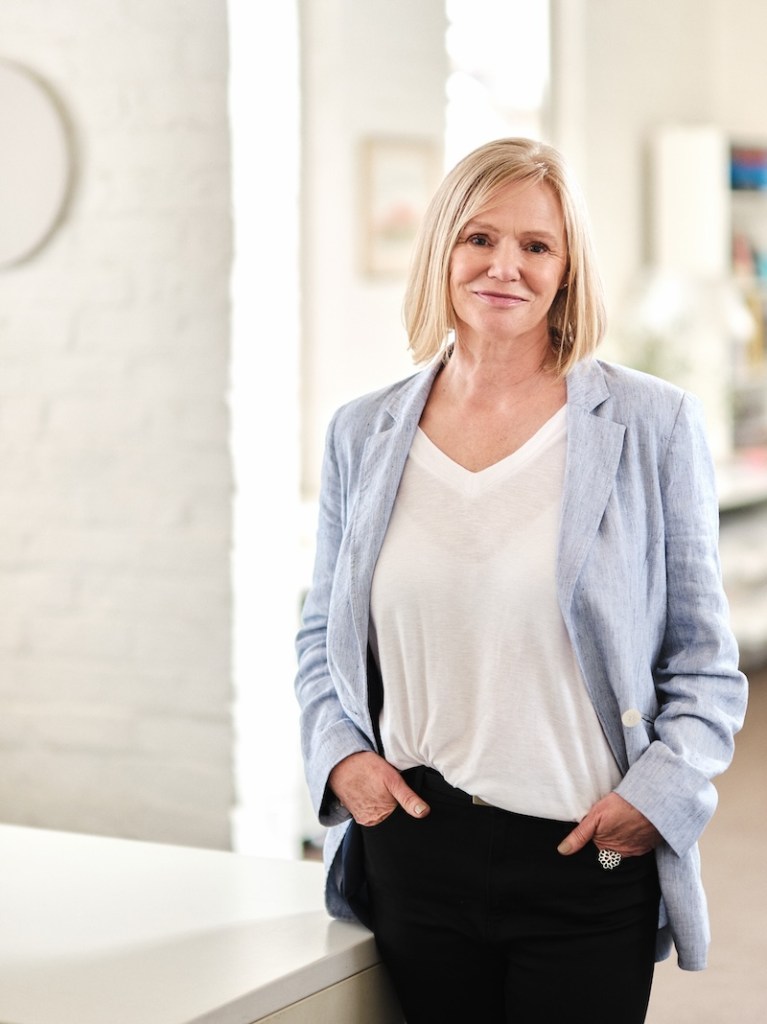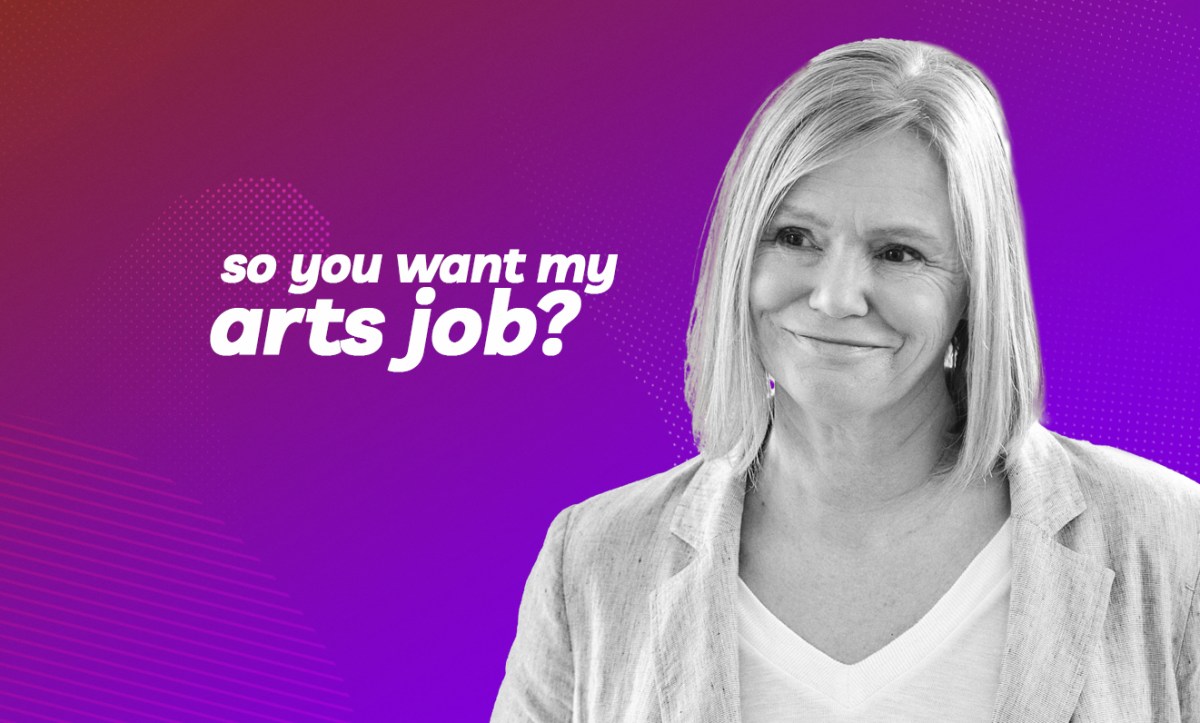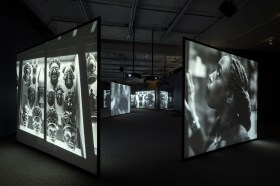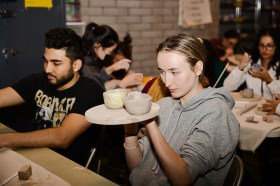Sally Evans has worked across the design industry for over 30 years. Today she heads up, Nexus Designs – a multidisciplinary design studio based in Melbourne, Australia. The studio annually partners with RMIT Interior Decoration and Design program to award the Nexus Designs Janne Faulkner Prize for Design Excellence.
Evans, with her love of colour, has become a respected constant in this specialist area, and leads the Graphic Design and Product Development division at Nexus Designs. Her career journey started with studying visual communications, before she began working as a graphic designer. She has brought those skills to Nexus Designs, to ensure a holistic design approach when working with clients. This is what she has to say about the career of a Design and Colour Consultant.
How would you describe what you do to a non-arts friend?
As a Design and Colour Consultant, I work across three major disciplines – graphic design, interior design and product development. My Colour Consultancy work is primarily with building product manufacturers. From paint to roofing, flooring, brick, textile and tile manufacturers – I lead a team to compile comprehensive research and analysis to advise our clients on what colours, materials and finishes they should retain in a range, what can be let go and what new ones should be incorporated.
My job is about helping to ensure their products continue to be relevant and desirable for their target customers. In all building projects, multiple material choices must be made – with colour, as well as texture and finish to be considered too. We specialise in sharing industry insights with our clients to inform the direction and innovation of their products.
What qualifications do you need for this job?
As far as I know, there are no formal tertiary qualifications in Australia for providing colour consultancy services, but I’d say a degree in design or architecture is an essential starting point. To progress in this profession, you need to have a genuine understanding and respect for the fundamentals of design and architecture, the concept of materiality and the nature of colour in all its guises.
The role requires you to be deeply observant and have the ability to effectively filter information and influences, according to the needs and relevance to each client and project. Gaining experience in the industry is critical to understanding how materiality and colour are used by specifiers.
How did you get your start in this career?

I initially trained as a graphic designer, where the focus was on visual communication and learning how things are seen and perceived in different ways. I learned early on that colour is one of the most powerful tools for visual communication, and throughout my career I have gained extensive experience in understanding how to use it effectively in different contexts.
Having first worked with Nexus Designs in the 1990s, and then returning to the studio 10 years ago, the multidisciplinary design practice has enabled me to build extensive experience in and understanding of the worlds of interior design, space planning, structure, joinery and materiality.
I have worked alongside Harley Anstee, a former Director at Nexus Designs, for many years, and he has taught me so much – kindly sharing his knowledge, methodology, experience and innate passion and insight for colour.
How collaborative is this job?
At Nexus Designs, our Graphic Design and Product Consultancy team currently comprises four members of staff. Our work is incredibly collaborative, as we gather and pool our insights from a wide range of sources, across the design and architecture industry. Heading up the team, I bring experience, knowledge and confidence to ensure that we are exploring and delivering research and expertise at a high level.
We work closely with design leaders and key industry influencers to test our ideas and seek their feedback. Collating and presenting these results to our clients, we share our expert advice so they can make informed strategic decisions for their businesses.
What’s an average week like?
Perhaps not all in the average week, but generally we are covering such things as:
- team meetings to allocate research topics, report preparation and image sourcing
- analysing a dozen variations of a cool mid-grey to fill a perceived gap in a range
- comparing matt, gloss and semi-textured finishes for tiles
- experimenting with large-scale patterns and colour variation for decorative glass
- preparing concepts for a commercial photoshoot of a new colour range
- designing a campaign to launch a new series of exterior colour palettes for residential homes
- advising on complementary groupings of colours within a range; for example, natural, earthy, cool or warm, and
- recommending naming conventions for a new colour range – individual colour names, range naming, colour descriptions.
What’s the most common misconception about your job?
I think there is a misunderstanding about the level of expertise and experience required for the job. While there’s plenty of scope for fun and creativity, we’re incredibly mindful of the trust our clients place in us, which can have a major influence on the direction of their business. Our forecasting service is complex and comprehensive – our clients invest in product innovation, technology and increasingly sustainable and environmental practices behind the scenes, and often colour is the most visible element that delivers all of this to market.
How competitive is this job?
The profession in Australia is relatively small and the positions are quite coveted. It takes time to gain the knowledge and experience required for manufacturers to have faith in your advice. However, in my experience the industry is very supportive of nurturing talented young designers.
Read: So you want my arts job: Games Curator
In an interview for your job, what skills or qualities would you be looking for?
It’s critical for people in this profession to have an interest in design and architecture of all kinds, preferably with actual experience in specifying and being responsible for the outcome of material choices. Alongside this, it’s important individuals have a real passion for colour, texture and all the nuances of materiality.
Curiosity is also crucial – being prepared to investigate many avenues, even the ones you may not agree with or have an interest in. You need to keep a very open mind so as not to dismiss anything too soon, but also have enough confidence to whittle all that down into the most important areas for consideration. You must be creative and playful to put new and innovative ideas on the table, but also pragmatic enough to understand the practical needs of industry.
What’s changing in your professional area today?
Artificial Intelligence is certainly the biggest potential change and will possibly be seen as a fun or easy route to determine what people like and want, and perform the forecasting element of what we do. There will be a feast of data available that some companies may see as being a direct route to understanding the current appetite for colour and design style, but we are yet to understand how accurate or relevant it will be.
I think there is potential for us to use it as a tool when investigating a very broad outlook on trends, but currently I can only see this being used in hindsight as opposed to predicting foresight – human analysis and human understanding will still be important to curate for human need.
What’s the weirdest thing that’s happened to you in this job?
As part of our work with COLORBOND a few years ago, we were touring around the country hosting introductory talks on its new Matt product range. We had designed a series of material palettes that highlighted the product alongside other complementary building products. Including brick facings, solid metal door handles, timber pieces, colour chips, mini chairs and corrugated steel samples, we used these as part of an interactive activity in all of our presentations. Precious cargo, we took these in our hand luggage, and without fail would get stopped every time by border security to explain ourselves!
What about gender balance and diversity in your industry?
In my experience I have not found the design industry to be discriminatory. Generally people are very open-minded. We’re creative people and, regardless of our background, are valued for our approach, input and passion.





